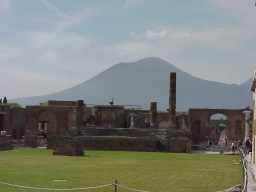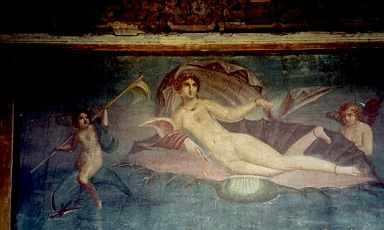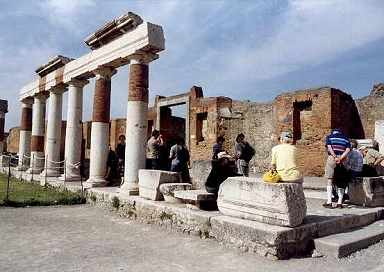
After breakfast at the agritourismo we started the long drive to Pompeii. We arrived there about 1 and had lunch before we entered the ruins. Pompeii was founded in the 8th century B.C.E. and by the 6th century Greek influence was prevalent and it flourished. In 80 BC, it fell under Roman influence and became a favorite resort for rich Romans. It was a city of about 25,000 when Vesuvius erupted in August of 79 AD and in two days it was buried by a layer of cinder about 20 feet deep.

We entered at the entrance farthest away from the main entrance where the crowds were less. The first structure we saw was the amphitheatre from about 80 BC.

We walked down what had been the main street, over half a mile long, and saw the remains of many interesting buildings. There were many residences, some with large courtyards and some with mosaic floors or frescoes.

There were also many shops. Of interest were the thermopolia, the equivalent of the fast-food places of today. Jars which contained food for sale were embedded in counters next to the street.




Later in the afternoon we met our local guide, who took us through the basilica and temple area, the baths, a brothel, a bakery, and other places of interest. He pointed out that the streets had high curbs, allowing running water to wash away the trash. To allow pedestrians to cross these streets there were blocks placed in the street. These were so spaced that the wheeled vehicles could still pass through.


Our tour ended at the Sea Gate, for Pompeii had at that time been close to the sea. From there, a tired group of travellers went to the bus for the drive to Paestum.
On to Paestum.
Back to home page.